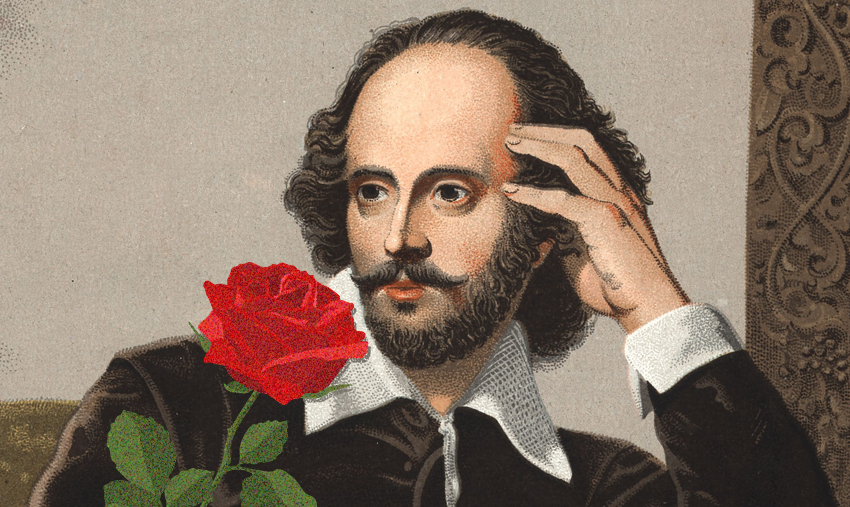Beyond Romeo
Love, Shakespeare style

Valentine’s Day is a great time to have just the right words–and there are few romantic wordsmiths more inspiring than The Bard himself, William Shakespeare, who used more than 15,000 different words in his works.
For comparison’s sake, John Milton used a total of 8,000 words, and the King James Bible had not too many more. According to the 1862 book, Lectures on the Science of Language, “a well-educated person in England, who has been at a public school and at university, who reads his bible, his Shakespeare, and the Times, seldom uses more than 3,000 to 4,000 words in actual conversation… and eloquent speakers may rise to a command of 10,000.”
That’s right, even “eloquent speakers” fall 5,000 words short of our man, Will.
So when Shakespeare wanted emotional impact from a word, he did not choose it willy-nilly (heh). But even he resorted to re-using some of his favorite words and even making some up as he went.
Any other name
The rose has been the gold standard of flower gifts for a really long time. Shakespeare used the word’ over 70 times in his works. We don’t know that it was his favorite flower per se, but clearly as a symbol it had depth and great metaphorical value for him. Shakespeare used the rose motif to describe themes of beauty, health, elegance, and love, describing the rose as pretty, pleasing, and sweet to smell.
When his works turn tragic, as they often do, the rose—and its thorns—evolve into a metaphor and symbol for heartbreak, sadness, death, and war. Heck, Emilia from The Two Noble Kinsmen, Act 2 Scene 2, hits most of these points in one tidy speech:
It is the very emblem of a maid.
For when the west wind courts her gently,
How modestly she blows and paints the sun
With her chaste blushes!
When the north comes near her, Rude and impatient, then, like chastity,
She locks her beauties in her bud again,
And leaves him to base briers.
When in doubt …
Sometimes the words on Shakespeare’s tongue (and the flowers in his garden) weren’t enough to convey an idea or a feeling. So he just made up his own! Shakespeare’s works include the first-ever recorded use of 1,700 words, many of which are still in use today. He concocted these words by changing nouns into words, combining words, or adding prefixes or suffixes. A few that seem especially appropriate for this international day of love:
Bedroom: A Midsummer Night’s Dream, Act 2 Scene 2
Then by your side no bedroom me deny,
For lying so, Hermia, I do not lie.
Kissing: Love’s Labour Lost, Act 5, Scene 2
And by this virgin palm now kissing thine,
I will be thine. And till that ⟨instant⟩ shut
Obscene: Love’s Labor’s Lost Act 1 Scene 1
Then for the place where—where, I mean, I did encounter that
obscene and most prepost’rous event that draweth
from my snow-white pen the ebon-colored ink, which
here thou viewest, beholdest, surveyest, or seest.
Undress: The Taming of the Shrew, Induction Scene 2
’Tis much.—Servants, leave me and her alone.—
Madam, undress you, and come now to bed.
… or, for a different kind of Valentine’s Day:
Lonely: Coriolanus, Act 4 Scene 2
Believe ’t not lightly—though I go alone,
Like to a lonely dragon that his fen
Makes feared and talked of more than seen, your son
